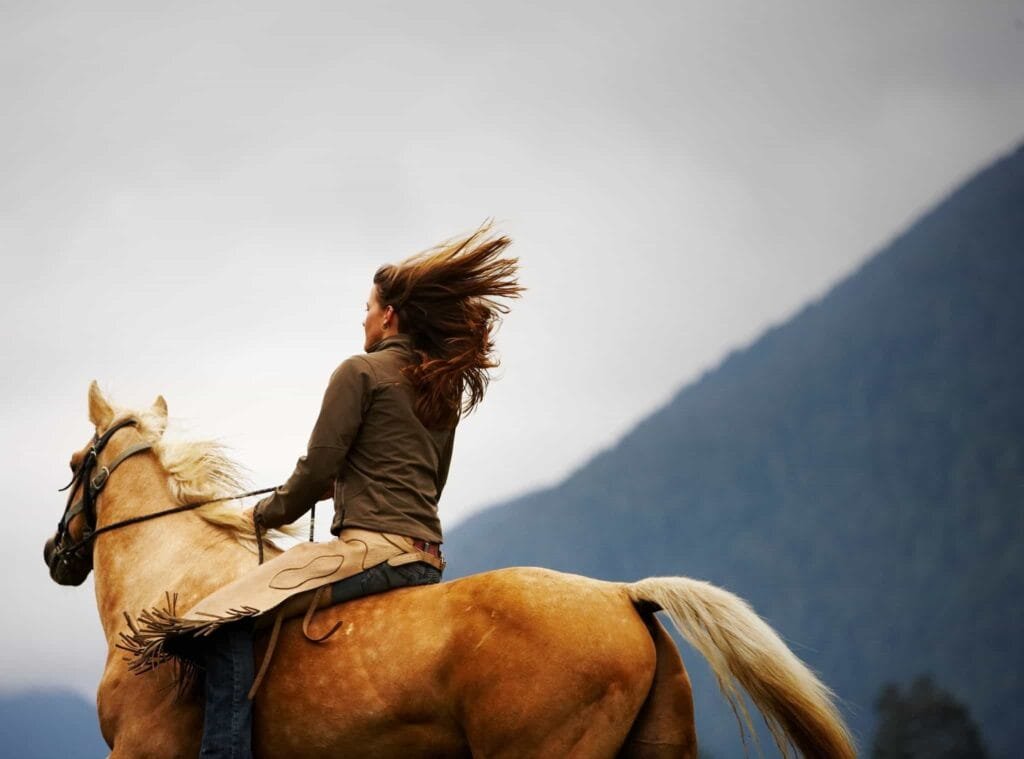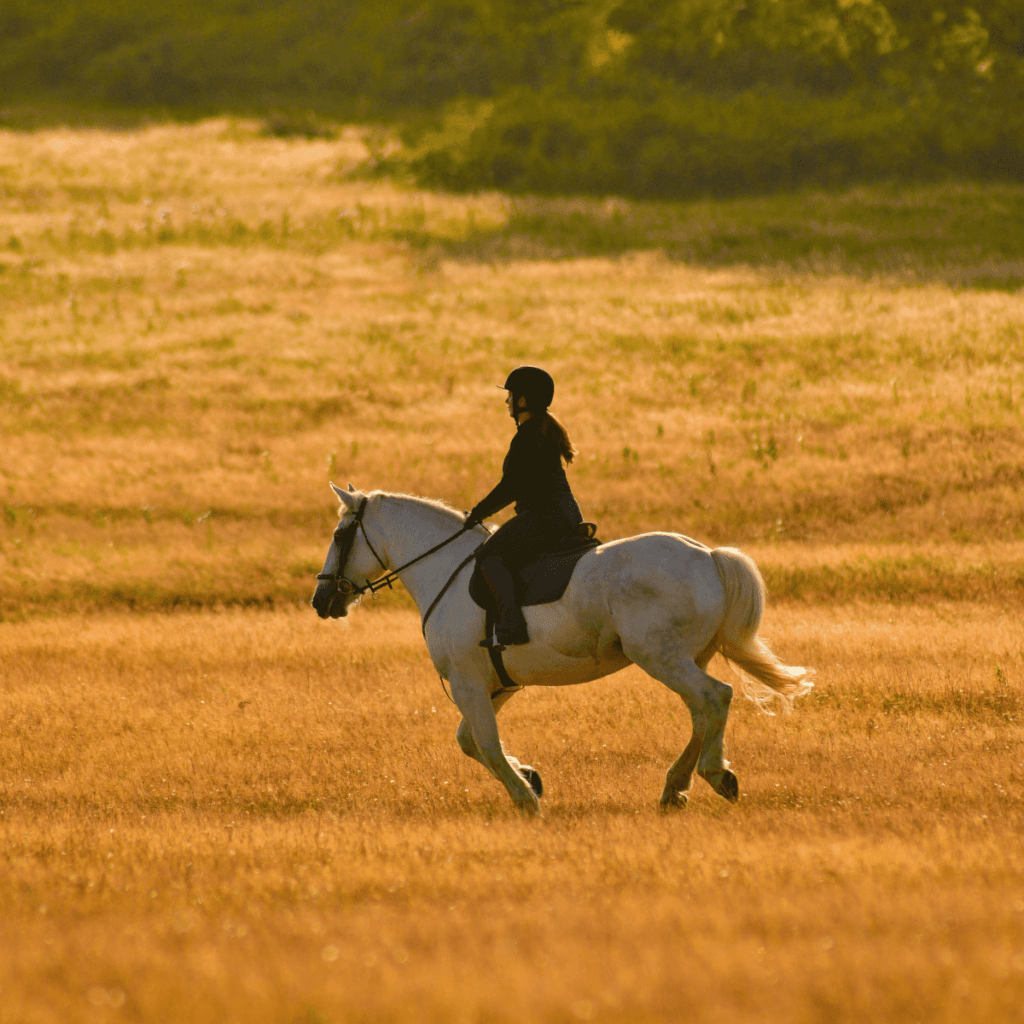Horseback riding is a rewarding and thrilling experience, but it’s essential to ride a horse that matches your skill level.
Riding a horse that is too much for you can lead to dangerous situations, stress, and a poor riding experience for both you and the horse. Recognizing the signs that a horse may be too challenging for your abilities is key to ensuring your safety and enjoying your rides.
Whether you are a beginner or a more experienced rider, here are six signs to look out for that might indicate the horse you’re riding is too much for you.
1. The Horse Is Unpredictable or Difficult to Control
One of the first signs that a horse might be too much for you is that it’s hard to control or seems unpredictable. If the horse constantly pulls on the reins, ignores your cues, or refuses to follow basic commands, it might indicate that the horse is not responding to your riding skills. While some horses have a naturally strong personality, the inability to control or direct the horse can be dangerous.
If you’re finding it difficult to maintain control, it’s important to assess whether the horse is simply too strong-willed for your current riding level or if the horse may have behavioral issues that need addressing.
What to Do:
- Consider working with a trainer to address the horse’s behavior.
- Ensure you’re using proper techniques and that the tack is fitting the horse properly.
- Assess whether this is a horse you should be riding based on your experience level.
2. You Feel Unsafe or Uncomfortable
If you feel anxious, tense, or unsafe while riding, it could be a sign that the horse is too much for you. A horse that’s difficult to ride may make you feel unstable in the saddle, which can lead to a lack of confidence. Feeling unsafe isn’t just uncomfortable—it can also increase your risk of an accident.
It’s important to feel secure and in control while riding. If you find yourself constantly holding on to the saddle or bracing yourself for unpredictable movements, it may be time to rethink whether this is the right horse for you.
What to Do:
- Speak with a riding instructor about your feelings to get professional advice.
- Focus on improving your own skills before riding more challenging horses.
- Take time to build trust and confidence with your horse in a safe, controlled environment.
3. The Horse Reacts Strongly to Simple Commands
If a horse overreacts to minor cues or commands, it might be too much for your current level of experience. Horses that are highly reactive may respond with sudden movements, such as bucking, rearing, or spooking, when you ask for something simple, like halting or changing direction. This can make the riding experience unpredictable and dangerous.
Some horses have a more sensitive nature, while others may have training issues. Either way, if a horse is reacting strongly to basic commands, it might indicate a mismatch between the rider and the horse’s temperament.
What to Do:
- Work with a trainer to understand how to communicate better with the horse.
- Consider riding a horse that has a more relaxed demeanor if you’re not yet comfortable handling highly reactive animals.
4. You’re Struggling to Keep Up with the Horse’s Pace
Another sign that a horse may be too much for you is if you’re constantly struggling to keep up with its pace. Horses have different energy levels, and while some are steady and easygoing, others are high-energy and fast-paced. If you feel that the horse is consistently moving too quickly or too erratically for you to maintain control, this could lead to frustration and even accidents.
In some cases, a high-energy horse may require more experience to handle, especially if it’s prone to sudden bursts of speed or excitement.
What to Do:
- Practice riding in different situations to get a better understanding of your limits.
- If the horse’s pace is too much for you, ask for a slower or more experienced mount while you improve your skills.
5. You’re Not Building a Positive Relationship with the Horse
Riding should be a partnership between you and the horse. If you find that you’re not connecting with the horse, or if the horse seems resistant to you, this could indicate that the horse isn’t a good match for your skill level or personality. A lack of trust or communication can lead to difficulties in handling the horse, creating a cycle of frustration for both you and the animal.
If the horse seems consistently nervous, aggressive, or uninterested in working with you, it may be a sign that you need to find a horse that suits your riding style and experience level better.
What to Do:
- Spend time getting to know the horse outside of riding to build a better bond.
- Consult with an instructor who can guide you in improving your relationship with the horse.
- If trust can’t be established, it may be time to look for a more suitable mount.
6. The Horse Shows Signs of Discomfort or Health Issues
Sometimes, the problem isn’t you—it’s the horse. If the horse is constantly resisting, bucking, or showing signs of discomfort, it could be dealing with physical issues, such as pain, illness, or improper saddle fit. A horse that is in discomfort may behave unpredictably or refuse to perform tasks.
It’s essential to rule out any health concerns before assuming the horse is just being difficult.
What to Do:
- Have a veterinarian check the horse for any signs of injury or discomfort.
- Ensure the horse’s saddle and tack fit properly, as ill-fitting equipment can cause pain and behavioral issues.
- If the horse is healthy but still difficult to ride, consult a trainer to address any training or behavior problems.
Conclusion
Riding a horse that is too much for you can be a frustrating and even dangerous experience. It’s crucial to listen to your instincts and recognize when a horse may be beyond your abilities. By watching for signs such as a lack of control, feeling unsafe, or difficulty connecting with the horse, you can ensure that both you and the horse have a positive, enjoyable riding experience.
Remember, horse riding should always be fun and safe. If you’re struggling with a particular horse, don’t hesitate to seek help from an instructor or trainer to find a better match or improve your skills.




